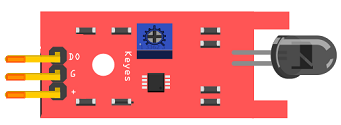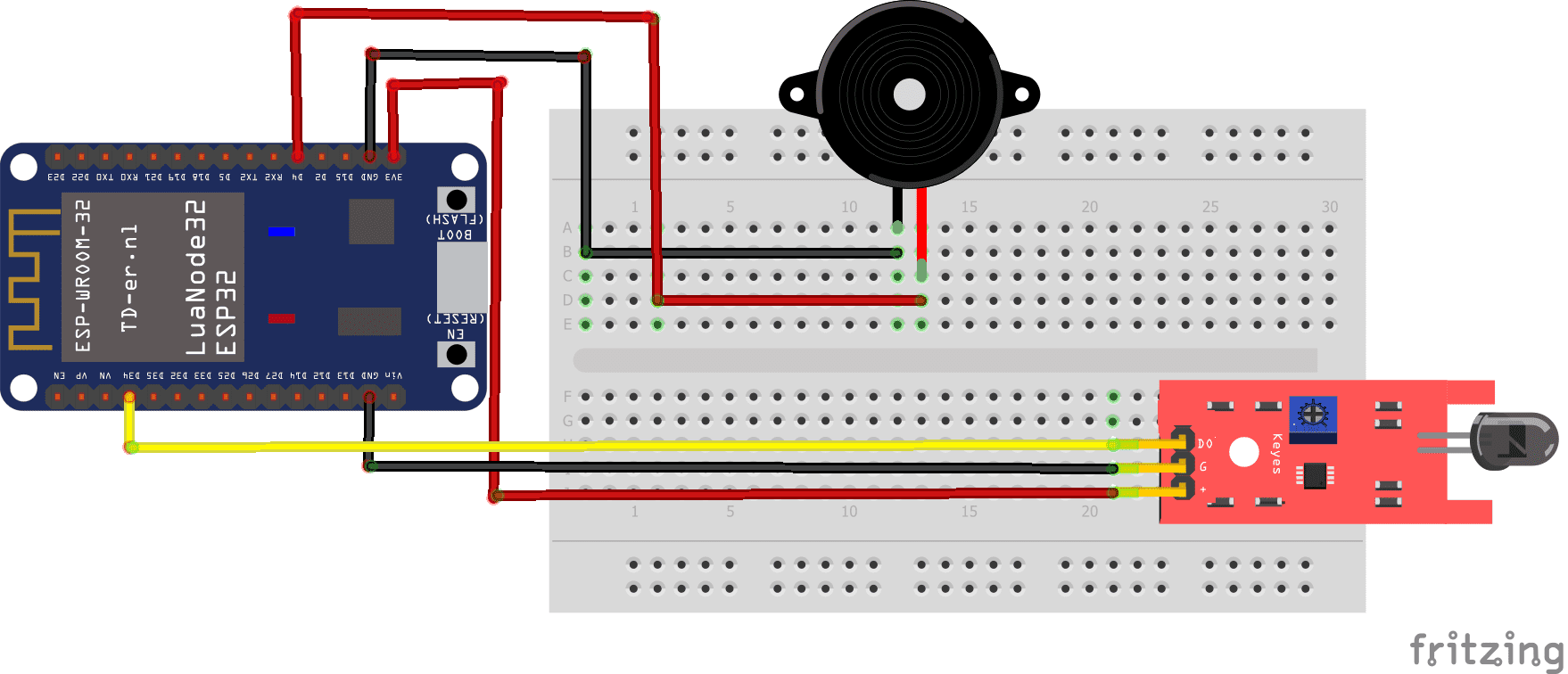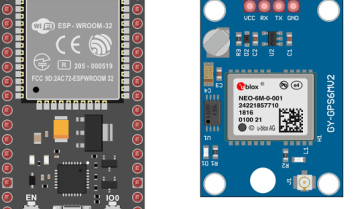
Intelligent flame detection system with ESP32

flame detection system
A flame detection system is a device or system that is used to detect the presence of a flame and provide an alert in the event of a fire. The most common type of flame detectors use one of the following technologies:
- Infrared (IR) detection: This type of detector uses an infrared sensor to detect the presence of a flame by analyzing the infrared radiation emitted by a fire.
- Ultraviolet (UV) detection: This type of detector uses an ultraviolet sensor to detect the presence of a flame by analyzing the ultraviolet radiation emitted by a fire.
- Visual detection: This type of detector uses a camera to capture an image of the area being monitored and uses image processing algorithms to detect the presence of a flame.
- Combination Detectors: These detectors use a combination of two or more technologies to detect the flame, providing a higher level of reliability and accuracy.
Once a flame is detected, the system can trigger an alarm or send a signal to a fire suppression system to extinguish the fire. Flame detection systems are widely used in industrial, commercial, and residential settings, particularly in areas where there is a risk of fire such as oil and gas production facilities, industrial processing plants, and power generation facilities.
intelligent flame detection system
An intelligent flame detection system is a type of flame detection system that uses advanced algorithms and sensors to detect and analyze flames. These systems typically use a combination of technologies, such as infrared and ultraviolet sensors, to detect the presence of a flame. They also use image processing algorithms to analyze the shape, size, and color of the flame, allowing them to differentiate between real fires and false alarms.
An intelligent flame detection system can provide a higher level of accuracy and reliability compared to traditional flame detection systems. These systems can also be integrated with other fire detection and suppression systems, such as fire alarms and sprinkler systems, to provide a comprehensive fire protection solution.
Some of the features that an intelligent flame detection system can have:
- Automatic calibration: The system can automatically adjust its sensitivity and detections thresholds based on the environment and background noise.
- False alarm reduction: An intelligent flame detection system can reduce false alarms by analyzing the shape, size, and color of the flame, and by using multiple sensors to confirm the presence of a fire.
- Remote monitoring and control: An intelligent flame detection system can be connected to a network, allowing it to be remotely monitored and controlled, and to send notifications in case of a fire.
- Machine Learning: Some intelligent flame detection systems use machine learning algorithms to improve their accuracy and adapt to new scenarios.
Objective of this project:
An intelligent flame detection system with ESP32 is a type of flame detection system that uses an ESP32 microcontroller to process and analyze data from sensors, and to communicate with other devices using Wi-Fi. The ESP32 can be used to connect the system to a network, allowing it to be remotely monitored and controlled.
To create an intelligent flame detection system with ESP32, you will need to:
- Connect a KY-026 flame sensor to the ESP32. The sensor should have the appropriate interface to connect to the ESP32‘s I/O pins. Some sensors may require an additional circuit to interface with the ESP32.
- Write the necessary code to read the data from the KY-026 flame sensor and send it to the ESP32. The code should include the necessary libraries and commands to read the KY-026 flame sensor data, analyze the data, and establish a connection to a Wi-Fi network.
- The ESP32 should also be programmed to establish a connection to the Wi-Fi network and receive the data sent by the sensor. The ESP32 can then be programmed to use image processing algorithms to analyze the shape, size, and color of the flame, and to differentiate between real fires and false alarms.
- Once the ESP32 is programmed and connected to a network, it can be accessed by a smartphone or computer via Wi-Fi. A mobile application or web page can be used to monitor the status of the system and receive notifications in case of a fire.
- The ESP32 can also be integrated with other fire detection and suppression systems, such as fire alarms and sprinkler systems, to provide a comprehensive fire protection solution.
In this project we will realize an intelligent fire detection system with the ESP32 card connected to the Internet network.
It mainly uses KY-026 flame sensor and buzzer.
When the flame sensor detects a flame, the ESP32 card gives the order for the buzzer to sound and sends an alert email via WIFI.
Necessary components
ESP32

ESP32 is a series of low-cost, low-power system-on-a-chip microcontrollers with integrated Wi-Fi and dual-mode Bluetooth. The ESP32 series of microcontrollers is developed by Espressif Systems, a Chinese company based in Shanghai.
The ESP32 is designed for use in a wide range of applications, including Internet of Things (IoT) devices, home automation systems, and wearable electronics. It features a dual-core processor, 4MB of flash memory, and 520KB of SRAM. It also includes a number of peripheral interfaces, such as SPI, I2C, UART, and PWM, as well as a built-in touch sensor and Hall effect sensor.
The ESP32 also supports a range of wireless connectivity options, including Wi-Fi (IEEE 802.11b/g/n), Bluetooth 4.2 and 5.0, and Bluetooth Low Energy (BLE). The Wi-Fi module supports both station and access point modes, making it easy to connect to existing networks or create your own.
The ESP32 can be programmed using the Arduino IDE, the ESP-IDF, or the MicroPython firmware. It also supports OTA(over the air) firmware updates, making it easy to update the device’s firmware without having to physically access it.
Overall, the ESP32 is a powerful, low-cost, and versatile microcontroller that can be used for a wide range of applications.
KY-026 flame detector

The KY-026 flame sensor is a low-cost flame sensor module that can be used to detect the presence of a flame. It is commonly used in DIY projects such as home automation and fire alarms.
The KY-026 sensor consists of a flame sensor and a comparator circuit. The flame sensor detects the infrared radiation emitted by a flame and outputs a digital signal to the comparator circuit. The comparator circuit compares the input signal with a reference voltage, and outputs a digital signal that indicates whether a flame is present or not.
The sensor has three pins: Vcc, Gnd, and Out. The Vcc pin should be connected to a 3-5V power source, the Gnd pin should be connected to ground, and the Out pin should be connected to a digital input pin on a microcontroller such as the ESP32. The sensor output is a digital signal, which can be directly connected to a microcontroller’s digital input pin.
The sensor is sensitive to visible and invisible light, it can be triggered by other sources of light such as the sun, incandescent lamps, and UV lamps. It’s important to place the sensor in a proper location where it can detect the flame but not be affected by other sources of light.
Buzzer

A buzzer is an electronic device that generates an audible sound. They are commonly used in electronic devices such as alarms, timers, and warning systems.
Buzzers can be divided into two main categories:
- Mechanical buzzers: These types of buzzers use a mechanical vibrating element (such as a diaphragm) to create sound. They are typically louder than electronic buzzers and have a longer lifespan but they require a DC voltage to operate and can consume a lot of power.
- Electronic buzzers: These types of buzzers use an oscillating electronic circuit to create sound. They are typically smaller and less expensive than mechanical buzzers and consume less power, but they are not as loud. They can operate on a DC or AC voltage.
To use a buzzer with an ESP32, you would connect the buzzer’s positive lead to one of the ESP32’s digital output pins and the negative lead to a ground pin. Then, using code, you can configure the output pin to be high or low to turn the buzzer on or off.
Connecting wires

Connecting wires refers to the process of physically connecting wires or cables to a device or circuit in order to establish an electrical connection. This can be done by using various connectors such as plugs, sockets, or terminal blocks. The wires are typically color-coded to indicate their function, such as red for power, black for ground, and yellow for signals.
Test plate

A test plate is a type of circuit board that is used to test electronic components. It typically consists of a flat board made of a non-conductive material, such as plastic or fiberglass, with a number of holes or pads that are used to connect electronic components. The test plate allows you to connect electronic components and test them easily.
Mounting
To perform the assembly, you can connect
-
the buzzer terminal (+) to pin D4 of the ESP32 board
- le borne (-) de buzzer à la broche GND de la carte ESP32
-
the buzzer terminal (-) to the GND pin of the ESP32 board
-
the VCC pin of the flame sensor to the 3.3V pin of the ESP32 board
-
the GND pin of the flame sensor to the GND pin of the ESP32 board

Micropython program
Here is the program of the intelligent fire detection system connected to the Internet:
Note: you must import the two libraries: ConnectWifi.py and umail.py.
|
1 2 3 4 5 6 7 8 9 10 11 12 13 14 15 16 17 18 19 20 21 22 |
print('RUN : main.py') import ConnectWifi import umail from machine import Pin, ADC from time import sleep ConnectWifi.connect() #connect to the Internet network by wifi flamme = ADC(Pin(34)) flamme.atten(ADC.ATTN_11DB) #Full range: 3.3v buzzer=Pin(4,Pin.OUT) while True: flamme_value = flamme.read() sleep(0.1) if (flamme_value<4095): #flame detection buzzer.value(1) # the buzzer starts ringing smtp = umail.SMTP('smtp.gmail.com', 587, username='emetteur@gmail.com', password='******') smtp.to('recepteur@gmail.com') smtp.send("Fire alarm") # Send an alert email smtp.quit() else: buzzer.value(0) #the buzzer stops ringing |



















